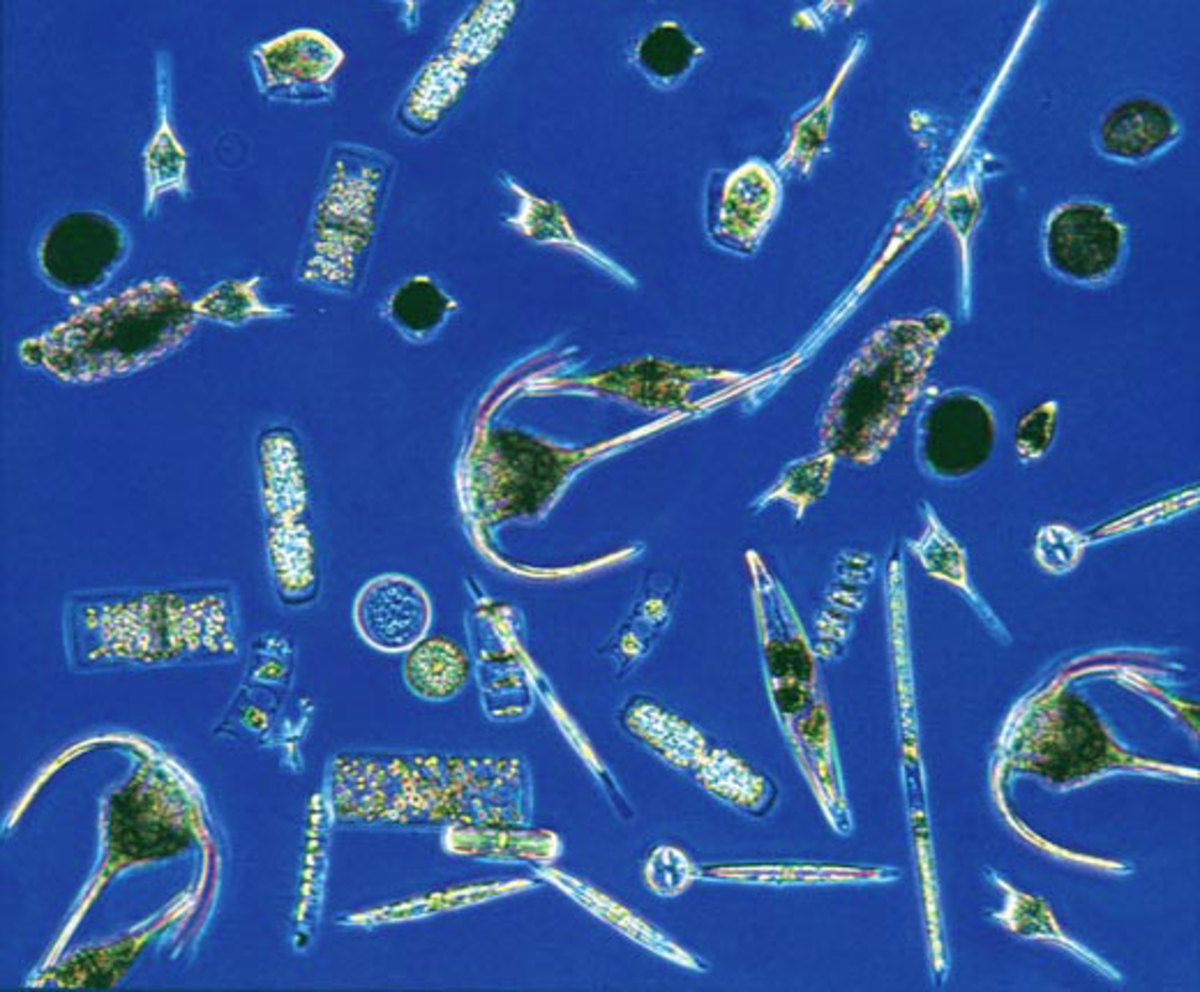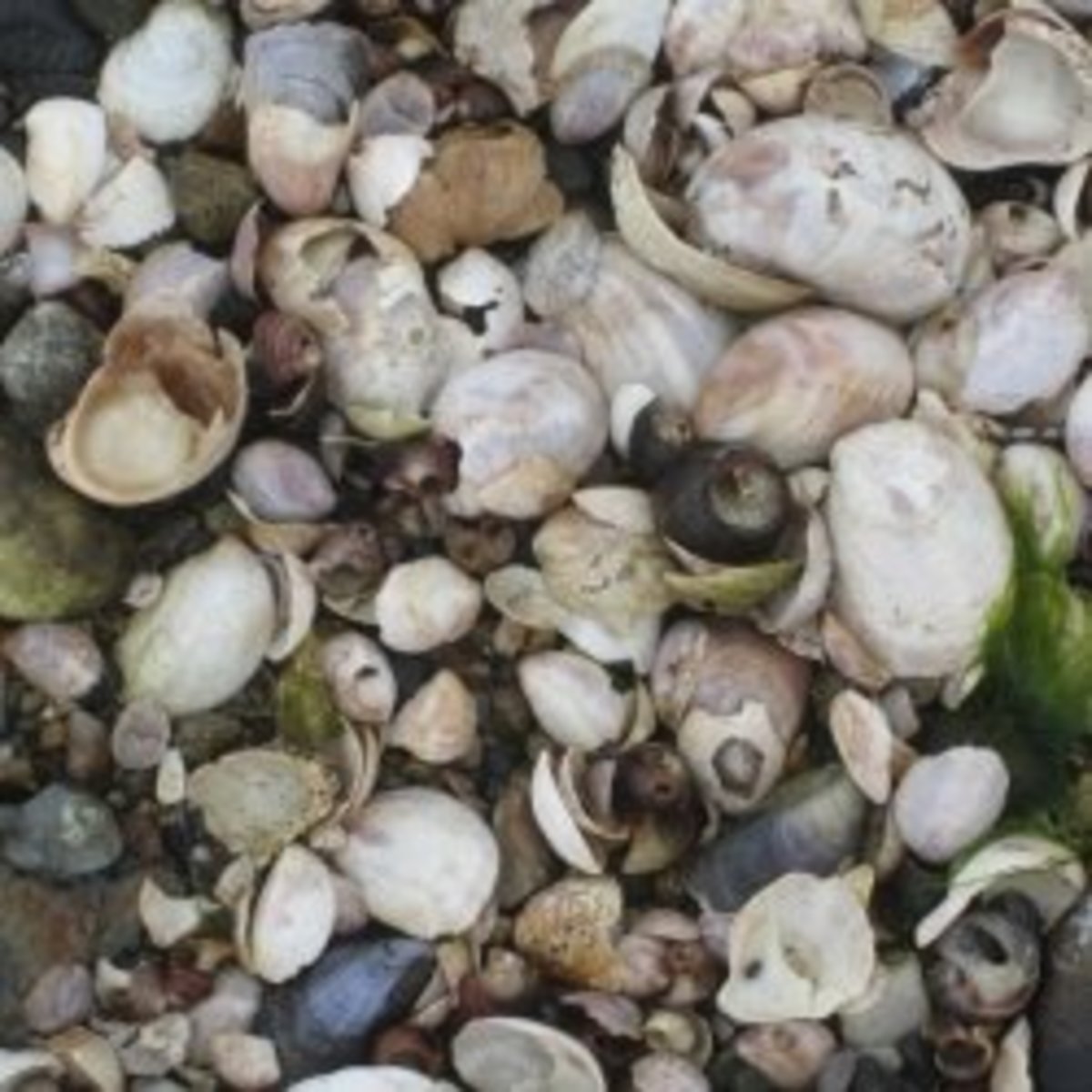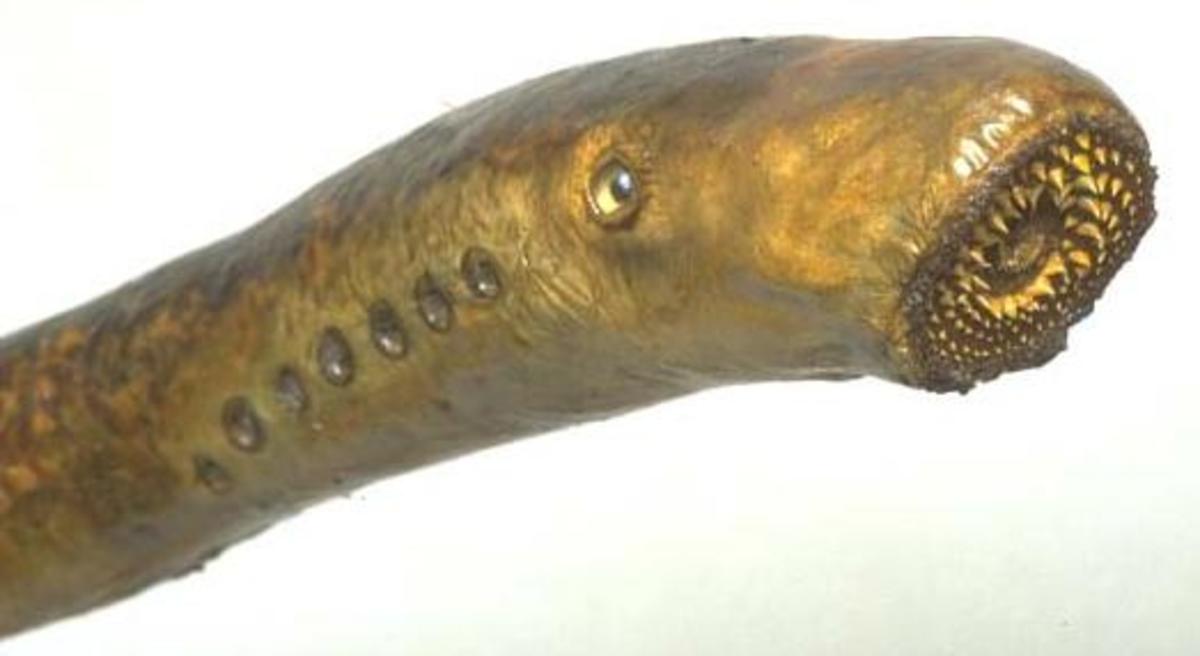Bioluminescent Red Tide Ocean Waves
San Diego Red Tide
It glows, it flashes, it lights up the waves like something out of a science fiction film or a high-tech horror movie. It's a natural coastal occurrence -- yet it can be harmful as well as entertaining. The 2011 red tide in San Diego lit up the waves with an unusual blast of glow-in-the-dark color in advance of Halloween. All along San Diego's coastline, the light show attracted an audience to the beaches. The electric blue waves that sparkled on the beach at night came from a red tide.
A red tide causes a rich visual effect: crashing waves glow neon blue. The glow-in-the-dark effect comes from an algae bloom. Vigorous motion such as the waves banging the algae cause bioluminescence. The flashing blue light comes from chemical reactions in their cells. Bioluminescence refers to things in nature that produce light, such as fireflies. The phytoplankton at the root of the light show is Lingulodinium polyedrum, the "LA Times" reports. The algae results in mild toxicity that can build up in some sea creatures.
Although the red tide, which shows up as rust colored swaths in the ocean during the day, doesn't generally cause any substantial harm, sinus and ear infections are more common when people swim in red tide waters.
There's no predicting how long a red tide will last. The algae bloom may affect areas of the southern California coast for a few weeks, or their stay may extend for months. The current algae bloom dates from mid-August, providing a spectacle for locals, visitors and everyone with a camera.
Surfers enjoy the novelty of riding glow-in-the-dark waves, and people collect bottles of ocean water to shake in the dark at home.
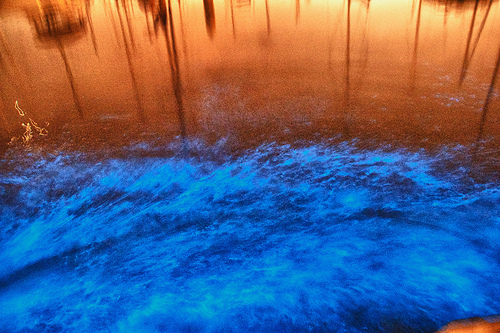
Algae Bloom
This algae bloom, persisting since mid-August, continues to affect the San Diego coast, causing a bright blue sparkling glow in the night waves. Learn more about the causes, effects and a possible solution to the dangers of the natural phenomenon knows as a red tide.
Red Tide June 26, 2005 in Carlsbad, California: Lingulodinium polyedrum
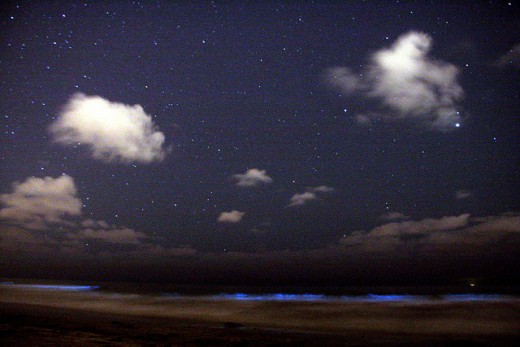
Algae Blooms and Toxins
Not all red tides are the same. Depending on the type and concentration of algae, they can have widespread effects. The toxicity can affect a region's food chains, affect fishing, kill fish and wildlife and cause illness in people who consume sea creatures affected by toxic algae blooms. Scientists prefer the term "Harmful Algae Blooms" or HABs, to describe these toxic conditions, according to National Oceanic and Atmospheric Administration's Harmful Algae website. Not all red tides, such as the one affecting the San Diego coastline are toxic to this extent. Some phytoplankton produce potent chemical toxins, but not all of them do.
Phytoplankton are tiny plants. Shellfish filter algae from sea water as a source of nutrition -- this is how toxins from harmful algae blooms become concentrated in certain seafood. Phytoplankton can proliferate so rapidly and intensively that they can cover hundreds of miles of ocean, the NOAA website reports. The ocean may appear clear, and yet have an overgrowth of toxin-producing algae.
Algae blooms can cause thick layers of dirty-looking foam to litter beaches, build-up of thick algae in fishing nets. Because of the biotoxins in certain algae blooms, areas are sometimes closed to fishing to help protect the public health until the Harmful Algae Bloom subsides.
Even non-toxic algae can kill fish -- as the red tide's biomass decays, it interferes with oxygen in the ocean. This effect causes widespread death to plants and animals in shallow waters, and has affected the California coastline in previous red tides.
Causes, Effects & a Possible Natural Solution
A rich supply of certain nutrients in the ocean fuel red tides, allowing certain algae to reproduce out of proportion. Like other populations on the planet, phytoplankton populations explode when there's a super-abundance of food. The food chain throughout the ocean has sensitive interconnections -- when one element get out of balance, even a tiny, seemingly innocuous creature such as a microscopic plant, it affects everything else on the food chain. Although photos of red tides make them look like works of art, red tides can devastate a region, affecting the livelihoods of people who fish and leaving dirty beaches and dead creatures in their wake.
In photographs, certain phytoplankton look like transparent blob aliens with little hairs or legs sticking off them and things that look like stomach-contents or blood cells inside of them. Whether you find their appearance fascinating or creepy, it's hard to imagine them wrecking large-scale havoc. Yet, like the scourges of locusts and other pests that can destroy a region on land -- conditions that can cause famine and disease and decimate entire regions of the earth -- an overgrowth of these seemingly helpless plant-creatures can spread death.
Although non-toxic red tides and Harmful Algae Blooms are a force of nature, there may be a remedy with the power to relieve their impact. Researchers have experimented with adding a potentially beneficial material to the ocean in the Sarasota area of Florida -- natural clay might help alleviate red tide conditions, but the results of this treatment require further research.
Seaweed over-growths can also affect the food chain and health of the coastline, according to the Harmful Algae website.
Surfing Glow-in-the-dark Waves!
Red Tide Author's Note
Growing up near Santa Cruz, California gave me a lifelong respect for the ocean and the coast -- It's an amazing habitat for many precious creatures. I hope this article inspires other with the power of nature and the importance of protecting our environment.
Showcase topics you care about on HubPages. If you haven't joined this community yet, sign up today: Sign up Right Here
Please vote this hub up and share it -- thanks!
Red Tide Waves Poll
Have you lived near or visited a beach during a red tide?
L. A. NOW: At Night, a Red Tide Glows Blue Along the San Diego County Coast
- At night, a red tide glows blue along the San Diego County coast - latimes.com
Find a dark spot on the San Diego County coastline after night falls and you might be be treated to a spectacular neon blue light show. Bioluminescent waves, which glow a vivid blue as they crash ashore, have been dazzling...
NOAA: Harmful Algal Blooms (HAB)
- Harmful Algal Blooms (HABS): NOAA Watch: NOAA\'s All-Hazard Monitor: National Oceanic and Atmospheri
A detailed explanation of harmful algal bloom by the National Oceanic and Atmospheric Administration, including the health risks from contaminated fish shellfish. Only a small percentage of red tides have these strong toxins.

